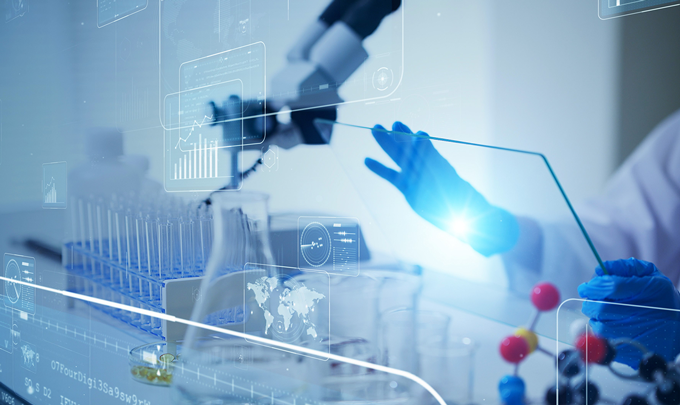A Bioeconomy to Beat the Next Pandemic: Time for Biotechnology to Shine

The past year has been incredibly challenging. But with every challenge comes opportunity, and today’s world is in precisely the position to take advantage of the hard lessons inflicted by a once-in-a-century pandemic. When prioritizing solutions to the myriad challenges we’ve faced since COVID-19 swept the planet last year, it’s clear that the focus should be on rapidly managing the next natural or engineered pathogen risk, not just eliminating it.
When we emerge from this crisis on the headwinds of historic scientific achievements in biotechnology, the prospect of being unprepared for the next one is calamitous and foolhardy. The great paradox in the defense against COVID-19 is that it’s not military might helping us defeat it; it has been breakthroughs in biotechnology that have helped us gain an advantage on the invisible threat. Biotechnology is one of our country’s most valuable defense technologies and as we look toward the future, the breakthroughs that have enhanced our biosecurity can also create less obvious economic opportunities.
The parallels biotechnology creates for national and international security and economic prosperity are not mutually exclusive. Still, they are rarely referred to synergistically or given equal footing in the defense and economic communities. How can we think about this differently?
Let’s start with national security. Our military has defense systems for nearly every kinetic threat imaginable. Think of missile defense systems or national intelligence operations as analogs to biotechnology. How might advances in biotechnology play an equal role? One approach is the creation of a biosecurity and pandemic prevention system. This would combine ultra-sensitive assays into a system that would detect biologic threats, rapidly mobilize biotechnology solutions, and quickly develop medical countermeasures to contain pathogenic threats before they develop into widespread pandemics.
Biology is adaptable, persistent, and distributed, and biotechnology can be designed with similar attributes to create a network of global systems armed with constantly evolving technology to monitor ecosystems, from the continental scale to individual buildings.
We can use integrated data from a holistic, persistent surveillance, along with genomic science to make precise, predictive models to arm professionals with the information they need to combat local threats in appropriately short time scales and have the supply chain to do it. The rapid and cost-effective nature of the biotechnology design-build-test learning cycle enables advances in medicine, such as producing new, genomically precise therapeutics to protect the health of the world’s populations.
Economically, the same technology that operates at the core of pandemic prevention system also contributes to new products and services that would drive new industries, opportunities, and enable workforce development capable of meeting threat challenges. Sensors that detect biothreats can be used to determine the health of environments, climate change, and even inform tourism trends. The same technology needed to develop the RNA COVID-19 vaccine could also be used to combat some of the most challenging non-infectious diseases of the body, such as muscular dystrophy and anemia using alternative gene-encoded approaches. Even infrastructure such as roads, unlikely as it might seem, can be constructed with new and emerging materials derived from the same synthetic biomanufacturing principles used for the supply chain resiliency underpinning a pandemic prevention system.
There is a bright future for biotechnology to impact and grow the bioeconomy and biosecurity of our nation. To explore its possibilities, we’re hosting three workshops in the coming months, convening some of the world’s greatest authorities to collaborate and understand the core capabilities and policies such a bioeconomy would need in order to thrive. We’ll take what we learn and define actionable steps the United States government can make now.
It’s time for biotechnology to shine. The most tragic of deaths are those that are preventable, and we have the ability now to protect our fellow humans in the United States and across the globe from catastrophic pandemics like the one we’re experiencing now. At the same time, we can emerge from this pandemic, leveraging what we’ve learned and creating new biotechnologies and infrastructures to develop bold bioeconomic opportunities that create new jobs and industries that might not have existed before the pandemic. We need only the will to do it.
Sign Up for Battelle Updates
Follow along with the latest news, announcements and updates from our Battelle community of solvers.